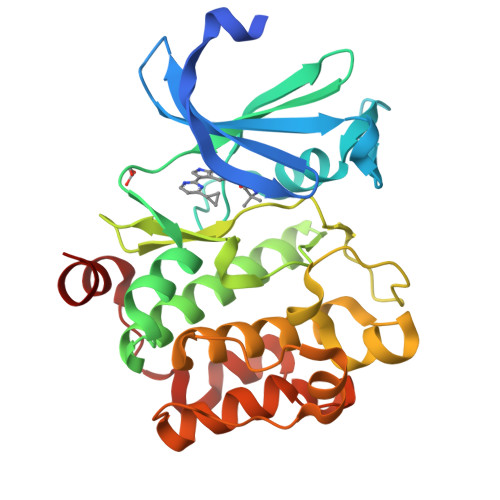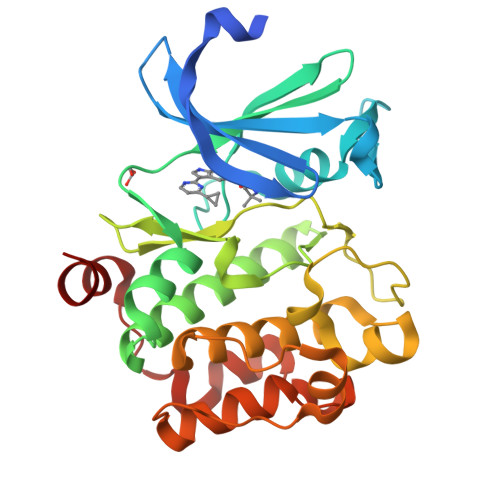The discovery and optimization of aminooxadiazoles as potent Pim kinase inhibitors.
Wurz, R.P., Pettus, L.H., Jackson, C., Wu, B., Wang, H.L., Herberich, B., Cee, V., Lanman, B.A., Reed, A.B., Chavez, F., Nixey, T., Laszlo, J., Wang, P., Nguyen, Y., Sastri, C., Guerrero, N., Winston, J., Lipford, J.R., Lee, M.R., Andrews, K.L., Mohr, C., Xu, Y., Zhou, Y., Reid, D.L., Tasker, A.S.(2015) Bioorg Med Chem Lett 25: 847-855
- PubMed: 25599837
- DOI: https://doi.org/10.1016/j.bmcl.2014.12.067
- Primary Citation of Related Structures:
4TY1 - PubMed Abstract:
High levels of Pim expression have been implicated in several hematopoietic and solid tumor cancers. These findings suggest that inhibition of Pim signaling by a small molecule Pim-1,2 inhibitor could provide patients with therapeutic benefit. Herein, we describe our progress towards this goal starting from the highly Pim-selective indole-thiadiazole compound (1), which was derived from a nonselective hit identified in a high throughput screening campaign. Optimization of this compound's potency and its pharmacokinetic properties resulted in the discovery of compound 29. Cyclopropane 29 was found to exhibit excellent enzymatic potency on the Pim-1 and Pim-2 isoforms (Ki values of 0.55nM and 0.28nM, respectively), and found to inhibit the phosphorylation of BAD in the Pim-overexpressing KMS-12 cell line (IC50=150nM). This compound had moderate clearance and bioavailability in rat (CL=2.42L/kg/h; %F=24) and exhibited a dose-dependent inhibition of p-BAD in KMS-12 tumor pharmacodynamic (PD) model with an EC50 value of 6.74μM (18μg/mL) when dosed at 10, 30, 100 and 200mg/kg po in mice.
Organizational Affiliation:
Department of Therapeutic Discovery, Amgen Inc., One Amgen Center Drive, Thousand Oaks, CA 91320-1799, USA. Electronic address: rwurz@amgen.com.




















